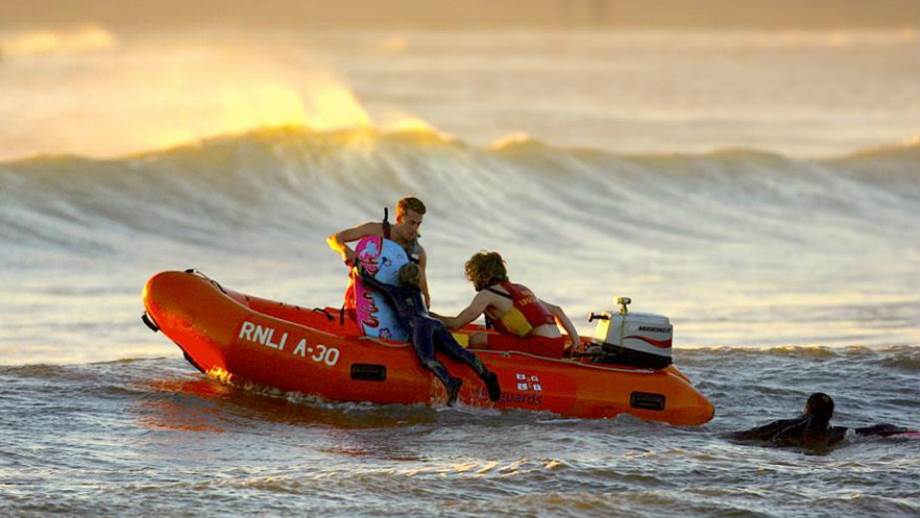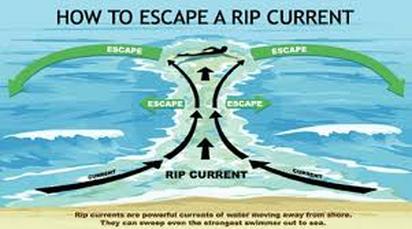|
RIP Currents
What are RIPS? How can we avoid them? Due to Bantham’s location on a tidal estuary, there are very dangerous currents, particularly at the river mouth of the River Avon. Also, we have a very strong RIP current on the left-hand side of our beach, next to the cliff edge/ rocks. At Bantham the RIP occurs when there are large waves pushing in at ANY state of tide. It predominately pulls water from RIGHT to LEFT as you look at the sea. It pulls you alongside the rocks on the left of the beach. A RIP current is a strong current of water running out to sea. It usually occurs when a channel forms between sandbars and rocks. Waves build up water on the beach which the returns out to sea through the channel forming a fast-flowing current. The larger the surf the faster the RIP current. RIP currents are very dangerous as they can carry water users out into very deep water. They are the main cause of Surf Rescues |
Identifying a RIP current – the feature below can help you to spot and avoid RIP current:
Caught in a RIP current –
|
Proudly powered by Weebly


